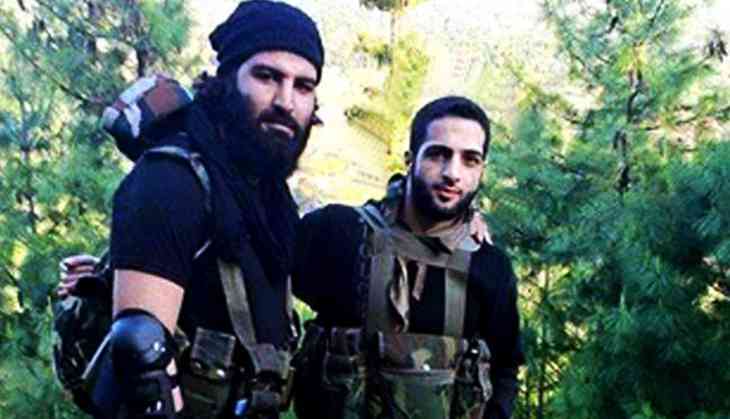Why Burhan Wani’s ‘successor’s’ killing could push the Valley to the edge again

It is deja vu in Kashmir. Almost a year after the killing of the popular Hizbul Mujahideen commander Burhan Wani tipped the Valley into an extended unrest, the killing of his ‘successor’ Sabzar Bhat threatens to take the Valley down same violent path again.
‘Neutralised’
Sabzar was killed along with two colleagues at Saimoh village of Tral township in south Kashmir’s Pulwama district. The encounter, the police said, followed an alleged ambush on an Army patrol outside the village.
However, the villagers haven’t bought into the ambush theory, and are insisiting that the security forces had a specific input about Sabzar's hideout.
A stormy Valley
But the news that Sabzar had been trapped has been enough to get the Valley to hold its breath. Growing anxious about the fallout, by the time the commander was killed around mid-day, violent protests broke out across South Kashmir and across numerous other places in central and North Kashmir, just like the way it had last year.
Last year’s violence had led to close to a 100 killings and several hundred blindings.
After Bhat’s death, students staged protests in North Kashmir towns of Sopore and Handwara and across all towns of South Kashmir.
One civilian, Molvi Aqib Ahmad of Khanqah Tral, was killed and several others injured after bullets hit them during protests near the site of gun battle. Dozens of others were injured in nearby Anantnag district. Reports say 16 injured persons have been brought to Anantnag district hospital from various parts of the district.
The state government moved fast to suspend the mobile internet to prevent the circulation of the pictures and videos of the protests. Ironically, it was only yesterday that the government had lifted the ban on social media in view of the ensuing fasting month of Ramadan.
In Srinagar, the district administration imposed strict restrictions in areas falling under the jurisdiction of eight police stations “until further orders.” The areas include Khanyar, Nowhatta, Safa Kadal, MR Gunj, Rainawari, Maisuma, Kralkhud and Batamaloo.
The line of succession
There is some confusion about Sabzar being Burhan’s successor. However, he was a very influential militant commander and widely believed to be Hizb’s Valley operational chief – albeit his erstwhile colleague Zakir Musa’s intermittent statements on social media outlining Hizb’s policies challenged this notion.
Last year, following Burhan’s killing, Hizb had anointed a militant with an alias Mehmood Gaznavi as its Valley chief. Since Sabzar was a close associate of Burhan and had gained some clout, people perceived that he was the successor.
But unlike Burhan, he rarely appeared in videos on the internet. In fact, in the immediate aftermath of Burhan’s killing, when some social media videos showed him roaming the forests along with his colleagues, Sabzar all but disappeared.
It was Zakir who regularly spoke for the Hizb until his recent bitter fallout with the outfit over ideological issues.
Zakir publicly took on the separatist amalgam Hurriyat Conference over the latter’s branding of Kashmir movement as political in nature. Zakir asserted that the struggle was for “the glory of Islam” and not for nation and nationalism. After his position was rejected by the Hizb’s PoK based leadership, Zakir quit the outfit and hinted at floating one of his own.
Little is, however, known about Zakir’s equation with Sabzar and whether Sabzar supported him or not. And whether the duo had parted ways and were heading the two separate outfits.
A grieving community
What cannot be disputed is Sabzar’s popularity. His death has spawned a deep outpouring of grief and a massive public groundswell.
As this report is being filed, people from the surrounding villages are flocking to Tral, Sabzar’s town, to participate in his funeral prayers. Around five lakh believed are believed to have participated in Burhan’s funeral last year.
And if the authorities hand over the body and ease the movement in Tral, lakhs are expected to attend Sabzar’s funeral.
So where are things headed? In the gathering groundswell, the only thing that can pre-empt a repeat of the last year’s turmoil is for the government to act with a great deal of restraint and ensure no further civilian killings take place.
“The coming few days are thus crucial. If no more killings take place, the government could be hoped to overcome the first major challenge to peace this summer,” says Naseer Ahmad, a local columnist. “One more thing going in favour of the government is that the last year’s extended unrest has set in a protest fatigue in Valley. Economy too has been hammered, leaving businesses hardly in a position to go for more hartals. So, people would hardly support a drawn protest if government doesn’t provoke with more killings and blindings.”
First published: 27 May 2017, 17:53 IST
